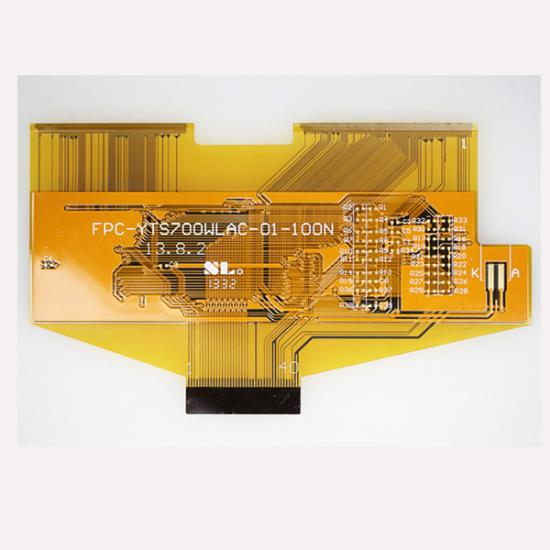Design Considerations for High-Performance Flexible PCBs
Introduction
Flexible Printed Circuit Boards (PCBs) have revolutionized the electronics industry by offering unparalleled versatility, lightweight designs, and the ability to fit into complex geometries. As devices become more compact and sophisticated, the demand for high-performance flexible PCBs continues to grow. However, designing these advanced circuits requires careful consideration of several factors to ensure reliability and optimal performance.
Material Selection
One of the most critical aspects of designing high-performance flexible PCBs is choosing the right materials. The materials used must withstand the mechanical stress of bending and flexing while maintaining electrical integrity.
Base Material: Polyimide is commonly used for its excellent thermal stability and flexibility. It can endure extreme temperatures without degrading, making it ideal for high-performance applications.
Copper Foil: The type and thickness of copper foil can significantly impact the performance of the PCB. Thinner copper layers are more flexible but may offer lower current-carrying capacity.
Adhesives: Adhesive materials should be selected based on their ability to bond different layers while withstanding temperature variations and mechanical stress.
Trace Layout and Routing
The layout of traces on a flexible PCB is crucial for maintaining signal integrity and ensuring that the board can flex without damage.
Trace Width and Spacing: Trace width should be optimized to balance flexibility and current-carrying capacity. Wider traces are less prone to cracking but may reduce the board’s flexibility. Proper spacing between traces is essential to prevent short circuits and signal interference.
Trace Routing: Avoid sharp bends in trace routing as they can create stress points that are prone to cracking. Gentle curves and staggered routing help distribute stress more evenly across the board.
Layer Stack-Up: In multi-layer flexible PCBs, the layer stack-up must be carefully planned to avoid excessive stress on any single layer. Symmetrical stack-ups can help maintain balance and prevent warping.
Mechanical Considerations
Flexibility is the hallmark of these PCBs, but it introduces unique mechanical challenges that must be addressed during the design phase.
Bend Radius: The bend radius is a critical parameter in flexible PCB design. A smaller bend radius increases the risk of damage to the traces and dielectric layers. Designers should follow industry guidelines for minimum bend radius to ensure longevity.
Reinforcements: Adding stiffeners in areas that don’t require flexibility can provide mechanical support and reduce stress on critical areas. This is especially useful in regions where connectors or components are mounted.
Dynamic Flexing: If the PCB will be subjected to repeated bending or flexing during operation, it’s essential to test the design under these conditions to ensure durability. Dynamic flexing can lead to material fatigue, so the choice of materials and trace routing must be optimized for long-term performance.

Thermal Management
Thermal management is a crucial aspect of high-performance PCB design, especially in flexible circuits where heat dissipation can be challenging.
Heat Distribution: Even distribution of heat across the PCB is essential to prevent hotspots that can cause material degradation or failure. Designers can use thermal vias, copper pours, and heat sinks to manage heat effectively.
Material Thermal Properties: The materials used in flexible PCBs should have good thermal conductivity and low thermal expansion to maintain stability under varying temperatures.
Electrical Performance
Maintaining high electrical performance in a flexible PCB involves careful attention to signal integrity, impedance control, and shielding.
Impedance Control: For high-frequency applications, controlling impedance is critical to ensure signal integrity. This can be achieved by adjusting trace width, spacing, and using appropriate dielectric materials.
Signal Shielding: To minimize electromagnetic interference (EMI), shielding techniques such as ground planes or shielding layers should be employed. Proper grounding is also crucial for reducing noise and improving signal quality.
Capacitance and Inductance: The parasitic capacitance and inductance of traces can affect signal performance, particularly in high-speed circuits. Designers should minimize these effects through careful layout and material choices.
Testing and Validation
Thorough testing and validation are essential to ensure that the flexible PCB meets performance requirements and can withstand the intended operating conditions.
Prototyping: Creating prototypes allows designers to test the PCB under real-world conditions, identify potential issues, and refine the design before full-scale production.
Environmental Testing: Flexible PCBs should be tested under various environmental conditions, including temperature extremes, humidity, and mechanical stress, to ensure reliability.
Electrical Testing: Continuity, insulation resistance, and signal integrity tests should be performed to verify the electrical performance of the PCB.
Conclusion
Designing high-performance flexible PCBs requires a careful balance of material selection, trace layout, mechanical considerations, thermal management, and electrical performance. By addressing these factors during the design phase, engineers can create flexible PCBs that not only meet the demands of modern electronics but also offer durability and reliability in challenging applications. As technology continues to advance, the importance of well-designed flexible PCBs will only grow, making these considerations more crucial than ever.
Send PCB Files to Sales@ucreatepcba.com, We Will Quote You Very Soon!



